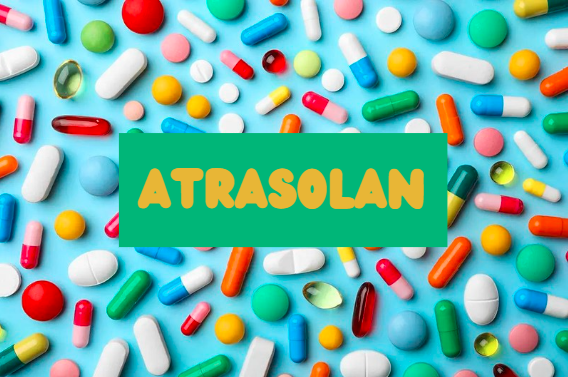Introduction to Atrasolan: A Modern Solution for Anxiety
In today’s fast-paced world, mental health has become a critical area of focus, with anxiety being one of the most common issues faced by individuals across the globe. Atrasolan has emerged as a promising medication in the treatment of anxiety, particularly anxiety linked with depression.
This article delves deep into the uses, benefits, mechanisms, and considerations surrounding Atrasolan, aiming to provide a comprehensive resource that surpasses existing information and serves as a valuable guide for those seeking knowledge about this medication.
What is Atrasolan?
Atrasolan is a pharmaceutical drug primarily used to alleviate symptoms of anxiety, including those that are secondary to depression. It belongs to a class of medications known as anxiolytics, which work by reducing excessive nervousness, agitation, and other related symptoms of anxiety disorders. While Atrasolan is not as widely recognized as some other anxiety medications, it has been gaining traction due to its efficacy and relatively low side effect profile.
The Pharmacological Profile of Atrasolan
Understanding how Atrasolan works requires a closer look at its pharmacological properties. Atrasolan acts on the central nervous system (CNS), influencing neurotransmitter activity, particularly gamma-aminobutyric acid (GABA).
GABA is an inhibitory neurotransmitter that plays a key role in reducing neuronal excitability throughout the nervous system. By enhancing GABAergic activity, Atrasolan effectively reduces anxiety and creates a calming effect, which is particularly beneficial for those experiencing anxiety-related symptoms.
The Role of Atrasolan in Treating Anxiety
Anxiety disorders are complex and multifaceted, often requiring a combination of therapeutic approaches for effective management. Atrasolan’s primary role in treating anxiety is to provide symptomatic relief, allowing individuals to manage their daily activities with reduced stress and agitation.
The medication is particularly useful for short-term relief, though its application in long-term anxiety management should be approached with caution and under professional supervision.
Atrasolan and Depression-Related Anxiety
One of the notable aspects of Atrasolan is its efficacy in treating anxiety that stems from depressive disorders. Anxiety and depression often coexist, creating a challenging cycle where one condition exacerbates the other.
Atrasolan, by addressing anxiety symptoms, can indirectly contribute to alleviating depressive symptoms, particularly those related to heightened nervousness, restlessness, and fear.
Benefits of Atrasolan Over Other Anxiolytics
When comparing Atrasolan to other anxiolytics, several benefits make it a noteworthy option for patients and healthcare providers alike. Here are some of the key advantages:
1. Faster Onset of Action
- Atrasolan is known for its relatively fast onset of action, which can be particularly beneficial in acute anxiety situations. Patients often report feeling relief within 30 minutes to an hour after administration, making it a suitable option for those who need quick symptom management.
2. Lower Risk of Dependency
- Unlike some other anxiolytics, particularly benzodiazepines, Atrasolan has a lower potential for dependency. This makes it a safer option for long-term use under medical supervision, reducing the risk of withdrawal symptoms and addiction.
3. Minimal Sedative Effects
- Many anxiolytics come with significant sedative effects, which can impair daily functioning. Atrasolan, however, tends to have minimal sedative effects, allowing individuals to maintain their productivity and alertness while managing their anxiety symptoms.
4. Broad Spectrum of Application
- Atrasolan is not only effective for generalized anxiety disorder (GAD) but also for anxiety linked with various other conditions, including social anxiety disorder, panic disorder, and anxiety associated with depression.
How to Use Atrasolan Safely and Effectively
Like any medication, Atrasolan should be used responsibly and under the guidance of a healthcare provider. Here are some essential considerations for its safe and effective use:
1. Dosage and Administration
- The dosage of Atrasolan varies depending on the severity of the symptoms, the patient’s age, weight, and overall health condition. It is typically administered orally, with doses ranging from 10 to 40 mg per day, divided into smaller doses as required. It’s crucial to follow the prescribed dosage to avoid potential side effects.
2. Possible Side Effects
- While Atrasolan is generally well-tolerated, some individuals may experience side effects. Common side effects include dizziness, dry mouth, headache, and gastrointestinal discomfort. These side effects are usually mild and tend to resolve as the body adjusts to the medication. However, if severe side effects such as confusion, difficulty breathing, or allergic reactions occur, immediate medical attention is necessary.
3. Interactions with Other Medications
- Atrasolan may interact with other medications, particularly those that depress the central nervous system, such as alcohol, sedatives, and certain antidepressants. It’s important to inform your healthcare provider about all medications you are currently taking to avoid adverse interactions.
4. Long-Term Use Considerations
- Long-term use of Atrasolan should be closely monitored by a healthcare professional. While it has a lower dependency risk compared to other anxiolytics, prolonged use can still lead to tolerance, meaning higher doses may be required over time to achieve the same effect. A gradual tapering off under medical supervision is recommended if discontinuing the medication.
Atrasolan in the Context of Mental Health Treatment
The use of Atrasolan should be viewed as part of a broader mental health treatment plan. Medications like Atrasolan are most effective when combined with other therapeutic approaches, such as cognitive-behavioral therapy (CBT), lifestyle changes, and stress management techniques.
1. Integrating Atrasolan with Therapy
- Cognitive-behavioral therapy (CBT) is one of the most effective forms of psychotherapy for anxiety disorders. When used alongside Atrasolan, CBT can help patients develop coping strategies and address the underlying causes of their anxiety, leading to more sustainable long-term outcomes.
2. Lifestyle and Behavioral Adjustments
- Regular exercise, a balanced diet, adequate sleep, and mindfulness practices are all crucial components of managing anxiety. Atrasolan can help reduce symptoms enough to allow individuals to engage more fully in these healthy lifestyle practices, which in turn can reduce reliance on medication.
Alternatives to Atrasolan: When to Consider Other Options
While Atrasolan is effective for many individuals, it may not be the best option for everyone. Here are some scenarios where alternative treatments may be more appropriate:
1. Severe Anxiety Disorders
- In cases of severe anxiety disorders, such as those requiring hospitalization, stronger medications or different classes of drugs, like selective serotonin reuptake inhibitors (SSRIs), may be required. Atrasolan may be used in conjunction with these medications for short-term relief.
2. Patients with a History of Substance Abuse
- Although Atrasolan has a lower potential for dependency, it should be used with caution in individuals with a history of substance abuse. Non-addictive alternatives, such as certain antidepressants or non-pharmacological treatments, may be more appropriate.
3. Pregnant or Breastfeeding Women
- The use of Atrasolan during pregnancy or breastfeeding should be carefully considered. Limited data is available on its safety in these populations, so alternative treatments with a more established safety profile may be recommended.
The Future of Atrasolan: Ongoing Research and Potential Developments
As research into anxiety disorders and their treatment continues, Atrasolan may see further developments in its application and efficacy. Ongoing studies are exploring its use in broader contexts, including its potential role in treating other mental health conditions, such as post-traumatic stress disorder (PTSD) and obsessive-compulsive disorder (OCD).
1. New Formulations and Delivery Methods
- Researchers are investigating new formulations of Atrasolan that could improve its bioavailability and reduce the frequency of dosing. These advancements could make Atrasolan an even more convenient and effective treatment option for anxiety.
2. Personalized Medicine Approaches
- With the rise of personalized medicine, future treatments could involve tailoring Atrasolan’s use based on genetic, biomarker, and phenotypic data, leading to more targeted and effective anxiety management strategies.
Conclusion: Atrasolan’s Role in Anxiety Management
Atrasolan stands out as a valuable tool in the management of anxiety, particularly for individuals who require a fast-acting, non-sedative option with a lower risk of dependency. Its application in treating anxiety related to depression further highlights its versatility. However, like all medications, it should be used as part of a comprehensive treatment plan that includes therapy, lifestyle changes, and regular medical supervision.
FAQs about Atrasolan
1. What is Atrasolan primarily used for?
- Atrasolan is primarily used to relieve symptoms of anxiety, including anxiety caused by depression.
2. How does Atrasolan work?
- Atrasolan works by enhancing the activity of GABA, an inhibitory neurotransmitter, which helps reduce anxiety symptoms by calming the nervous system.
3. What are the common side effects of Atrasolan?
- Common side effects include dizziness, dry mouth, headache, and gastrointestinal discomfort, which are generally mild and temporary.
4. Can Atrasolan be used long-term?
- While Atrasolan can be used long-term, it should be done under medical supervision to monitor for tolerance and dependency.
5. Is Atrasolan safe to use during pregnancy?
- The safety of Atrasolan during pregnancy is not well-established, and it should be used with caution. Alternative treatments may be recommended.
By understanding the full scope of Atrasol


No responses yet